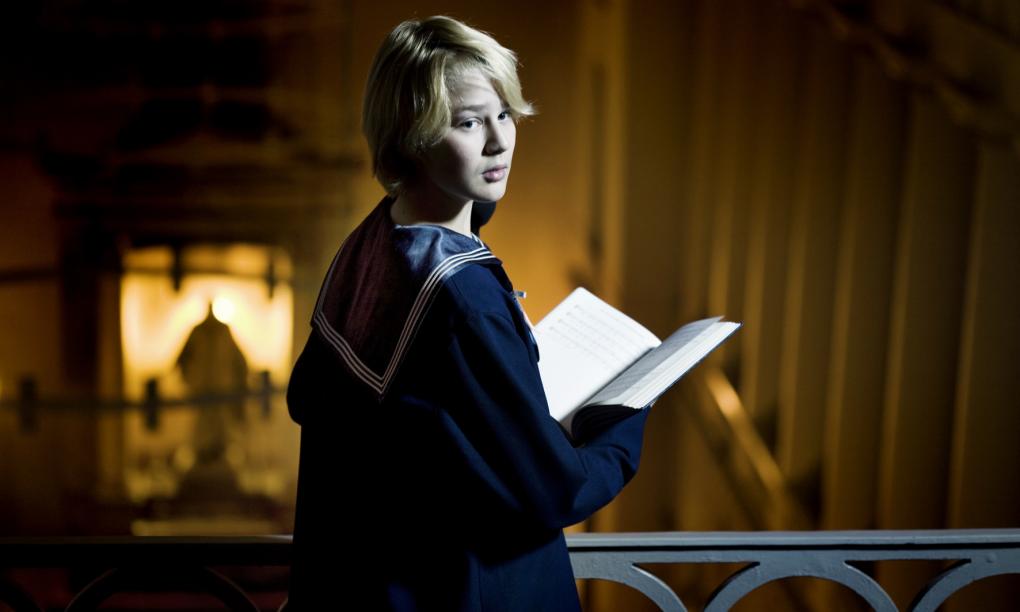12 NOTES DOWN – A PERSONAL STORY
"12 Notes Down" follows Jorgis, a boy who has sung in a boys’ choir most of his life. As invariably happens, his voice starts changing and Jorgis has some tough times ahead after he has to leave the choir. A classic rites of passage story, the film is a portrait of a young man confronting the adult life ahead of him. Director Andreas Koefoed says:
“'12 Notes Down' is a personal yet universal story of losing your identity in the tough transition from childhood to adolescence. It describes what it’s like to be forced to leave behind something you love and move on in your life toward all the things you don’t know yet. You lose something, but you gain something else – I find that touching.”
Koefoed himself is no stranger to his protagonist’s situation. When he was Jorgis’ age, he sang in the boys’ choir at the same school and went through some of the same experiences.
“The film’s story is a lot like my own. As a boy, I was in the same situation Jorgis is in. You live a classic, aesthetic lifestyle and all of a sudden it’s over. You go from feted choirboy to being a regular kid who goes out drinking and thinks about girls. Our shared experience with the choir created a bond between Jorgis and myself, and I think being in the film in a way helped him through his difficult phase.”
Watching the film, you never doubt that Koefoed’s familiarity with his subject allowed him to get into his protagonist’s head. Moreover, the director employs various aesthetic effects to underscore the personal angle. For the opening sequence in "12 Notes Down", he uses a remotecontrolled camera that swivels before it finally settles on Jorgis singing.
“I use alternative ways of filming that usually are seen only in fiction films. Take the camera that swivels 360 degrees in the opening sequence. It’s a way to tell the scene slowly. And you avoid too much editing, which hopefully lets you feel what he is feeling. It takes incredible timing and you risk losing identification and momentum.
“I put a premium on following a person in motion, for instance by filming over someone’s shoulder, so you’re included and share the experience with him or her. In "12 Notes Down", I keep the person in the frame all the time. You see the action reflected in his face, giving you a high level of identification and involvement.”
Koefoed singles out this unfolding character depiction as an essential element in making the kind of film he excels at – and likes himself.
“I spend a lot of time with my characters, getting to know their world. I try to depict the journey they are on, the development they are undergoing. I want to experience the world for good and ill and depict life’s beautiful and decisive moments as well as I can. If I’m touched by what’s happening in front of me and the camera, there’s a good chance that others will, too, when they watch the film.”
A DAY IN THE SMOKE – AN EXPERIMENT IN FORM AND EXPRESSION
Koefoed put a lot of thought into the visuals of his latest film, "A Day in The Smoke". We enter into a local smokers’ café in Cairo via an elegant gliding camera, showing the café’s male clientele and finally settling on the film’s fulcrum, a young poet. In beautiful Arabic, he recites his just finished poem about the café. It’s a place where all kinds of people meet and we follow several generations of local regulars discussing everything between heaven and earth. Men of all ages from different social strata come here to smoke hookahs, eagerly filling their lungs with smoke that’s like fuel for their sociable conversation.
"A Day in the Smoke". Photo: Mads Emil Hilmer
“In this film, I tried to do portraits that have the character of still photos, examining the men’s faces and postures in fixed framings. The men are sitting down, which makes it easy to capture them. The room is covered in murals and I enjoyed composing frames where the men merge with the background murals and themselves become paintings. I used a dolly to slowly pan across people’s faces and introduce the café’s dusty, smoky atmosphere. The café has an easy pace, and so the camera is slow, too. This film is more observing than "12 Notes Down" and much less adamant about getting into its characters’ heads. It just wants to observe and occasionally listen to what’s being said.”
Koefoed describes "A Day in The Smoke" as an experiment in form. Usually, he works with just one narrative track, but in this film he experiments with several. The film illustrates a typical day at the local café and you sense that everyone there has strong longings – to leave Cairo or for lost love.
“In Cairo, it was an advantage that people knew that I didn’t understand their language. That made them speak more freely. Also, it’s fascinating to shoot such a beautiful place and such handsome faces. Shooting abroad is visually stimulating, though it can be hard to be as exact, because you don’t have the same understanding of the language or the culture.”
“The film’s narrative form required very little interference by the director. Unlike "12 Notes Down", the film’s free, experimental form made the result exciting enough in itself. Only the poet, the narrative meta-observer sitting outside the café, was placed there by the director.”
“The poet can be seen as the film’s narrator, who uses his observations at the café as grist for his poems: the men’s conversations, the smell of tea, the changing light. His poetry creates a framework that ties the film’s small stories together. I could place any scene from the café within that framework and still have it make sense. I actually wanted the shoeshine boy to be the narrator, but he didn’t want to do it, because he thought shining shoes was demeaning and because his mother didn’t know he was working as a shoeshine. So the poet got the job.”


